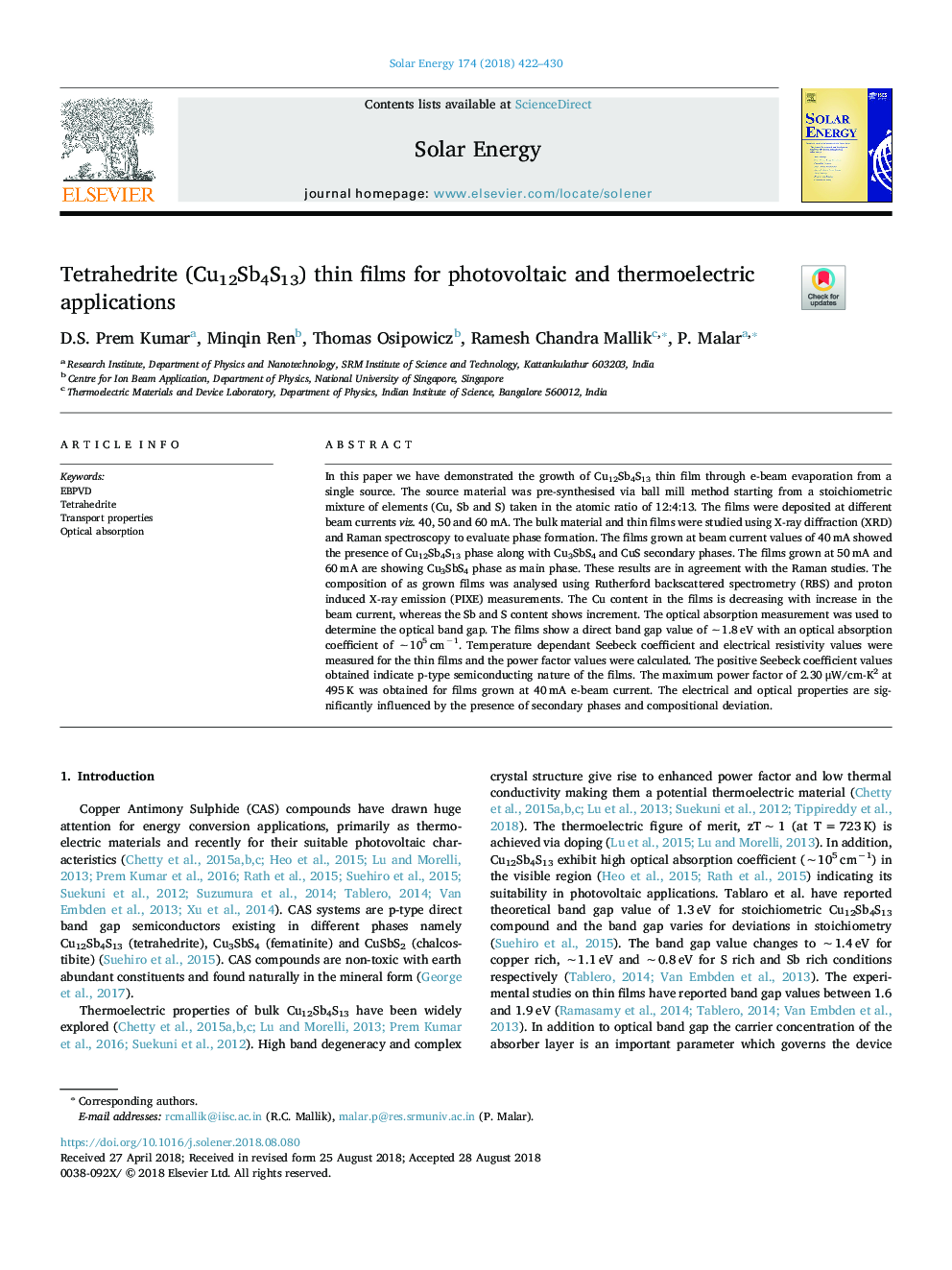| Article ID | Journal | Published Year | Pages | File Type |
|---|---|---|---|---|
| 10141982 | Solar Energy | 2018 | 9 Pages |
Abstract
In this paper we have demonstrated the growth of Cu12Sb4S13 thin film through e-beam evaporation from a single source. The source material was pre-synthesised via ball mill method starting from a stoichiometric mixture of elements (Cu, Sb and S) taken in the atomic ratio of 12:4:13. The films were deposited at different beam currents viz. 40, 50 and 60â¯mA. The bulk material and thin films were studied using X-ray diffraction (XRD) and Raman spectroscopy to evaluate phase formation. The films grown at beam current values of 40â¯mA showed the presence of Cu12Sb4S13 phase along with Cu3SbS4 and CuS secondary phases. The films grown at 50â¯mA and 60â¯mA are showing Cu3SbS4 phase as main phase. These results are in agreement with the Raman studies. The composition of as grown films was analysed using Rutherford backscattered spectrometry (RBS) and proton induced X-ray emission (PIXE) measurements. The Cu content in the films is decreasing with increase in the beam current, whereas the Sb and S content shows increment. The optical absorption measurement was used to determine the optical band gap. The films show a direct band gap value of â¼1.8â¯eV with an optical absorption coefficient of â¼105â¯cmâ1. Temperature dependant Seebeck coefficient and electrical resistivity values were measured for the thin films and the power factor values were calculated. The positive Seebeck coefficient values obtained indicate p-type semiconducting nature of the films. The maximum power factor of 2.30â¯Î¼W/cm-K2 at 495â¯K was obtained for films grown at 40â¯mA e-beam current. The electrical and optical properties are significantly influenced by the presence of secondary phases and compositional deviation.
Related Topics
Physical Sciences and Engineering
Energy
Renewable Energy, Sustainability and the Environment
Authors
D.S. Prem Kumar, Minqin Ren, Thomas Osipowicz, Ramesh Chandra Mallik, P. Malar,
